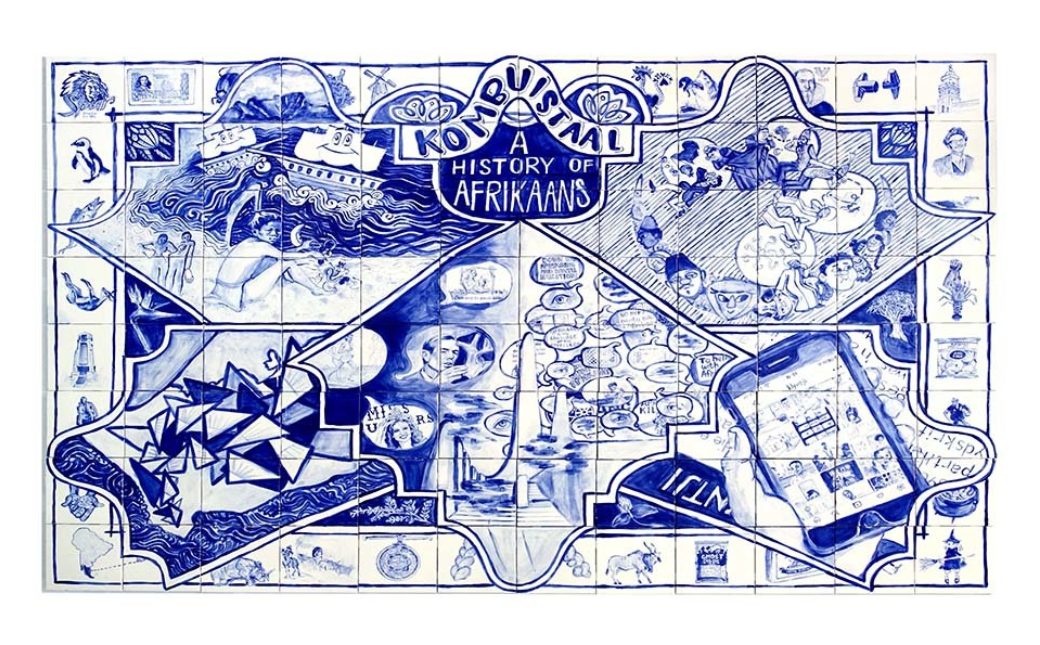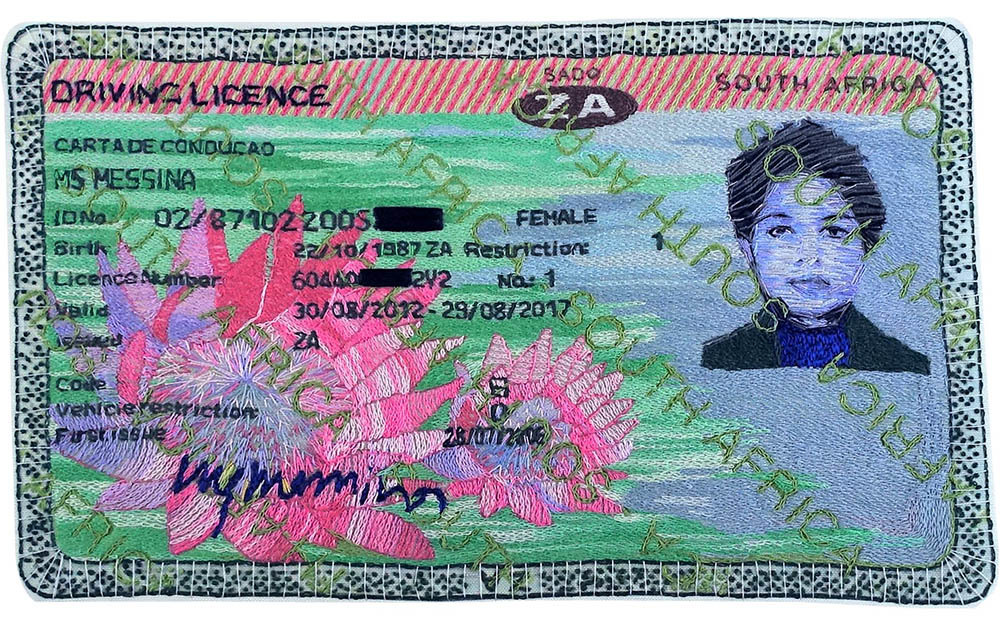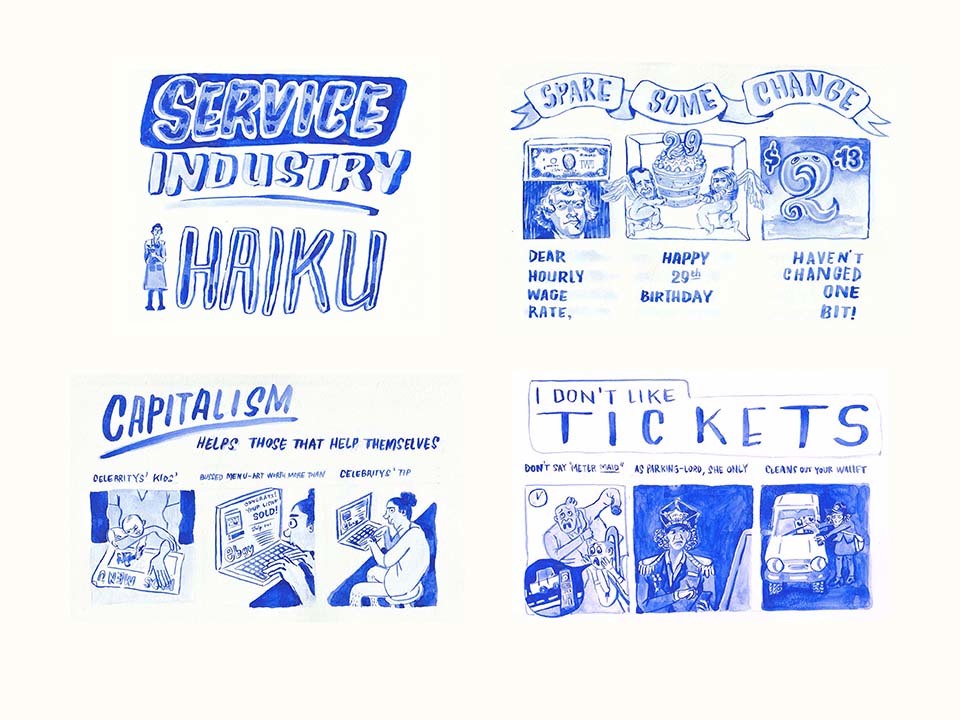

Oklahoma-based artist Mandy Messina drew on their South African childhood for their ArtNow 2021 works
Mandy Messina grew up in the literal shadow of apartheid. Their hometown of Paarl, South Africa, sits at the foot of a rocky hill where a monument to the Afrikaans language stands, a structure characterized by rounded obelisks that look so much like a science fiction set that it was used for a 12th season episode of Doctor Who.
“I remember our house was fairly close to it, and it sits on top of a granite rock, so it's got this really almost overwhelming presence. You can kind of orientate yourself if you keep looking to the rock and the Taal monument, which is this homage to Afrikaans, but it's more of a homage to a particular type of Afrikaans,” Messina said. “Like it kind of excludes — or at least when I was living in Paarl they excluded — quite a bit of the making of the language, like how it came about and developed.”
The now Oklahoma City-based Messina, whose work is included in ArtNow 2021, spent their formative years as a light-skinned Black in a country that, until the fall of the apartheid regime in the early 1990s, treated all people of color as inferior to the white descendants of Dutch settlers. So, the Afrikaanse Taalmonument was a kind of instrument of lingering oppression, a reminder of South Africa’s legacy of subjugation against the indigenous population. And as Messina describes it, there were gradations in how people were treated based on the relative melanin content of their skin.
“So my parents are both colored, and in South Africa, that's the term we still use for mixed race people that are three or four generations mixed,” Messina said. “And what that means in South Africa is that, in the hierarchy of race, they weren't white and they weren't black. For example, on Robben Island, if you were sent as a political prisoner and you were white, you got certain privileges, even though you are an enemy of the state. If you are a colored, you got slightly less privileges.”
When apartheid ended, Messina and their brother soon found many opportunities open to them, including education. Both of their parents are educators and encouraged Messina to pursue art. They attended the Michaelis School of Fine Art at the University of Cape Town, which despite integration carried vestiges of the old Apartheid regime.
“So it's sort of this weird juxtaposition getting to attend the best art school in Africa and my faculty looks very much like any European or American faculty would,” they said.
Much as the Afrikaanse Taalmonument loomed over Messina’s home during their childhood, so did Afrikaans and the legacy of its white speakers loom over Messina’s art. They had the idea of creating a graphic novel about Afrikaans, and their proposed cover for that project transformed into Kombuis Taal, on view in ArtNow. The term literally means “kitchen Dutch,” a derogatory term for the language used by slaves in Cape Town — a combination of Dutch, low German, maritime Portuguese, Malay and indigenous languages like Khoekhoe and the Khoisan languages.
Kombuis Taal was created using Delft tiles, a white porcelain originating in the Netherlands that is usually painted in blue glaze with sentimental images of old Holland. For Kombuis Taal, the imagery is not so sentimental, offering a beautifully rendered, thoroughly blunt and brief history of the language.

In addition to Kombuis Taal, ArtNow includes two other works with trenchant social commentary originating in Messina’s new life in Oklahoma: Service Industry Haiku 1 and Service Industry Haiku 2. Both comment on the stark reality of stagnation wages and the treatment of restaurant workers by patrons, and both are darkly funny.
While they see Oklahoma’s imperfections with clear eyes, Messina also believes their new home state is steadily improving as a cultural center.
"It feels like Oklahoma is on the cusp of something really cool,” Messina said. “And I want to be here when that happens.”
Get your free tickets to visit ArtNow 2021 and experience the work of Messina and their fellow Oklahoma artists firsthand.
Images: Mandy Messina, Kombuis Taal, 2019. Hand-painted ceramic tiles. 48 x 72 inches. Collection of the artist. © Mandy Messina. Photo courtesy of the artist. Mandy Messina, South African Driver License, 2016. Embroidery thread on printed eco-canvas. 18 x 24 inches. Collection of the artist. © Mandy Messina. Photo courtesy of the artist. Mandy Messina, Service Industry Haiku 1, 2020. Gouache on paper. 18 x 24 inches. Collection of the artist. © Mandy Messina. Photo courtesy of the artist.
Return to New Light.









